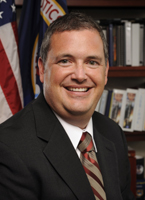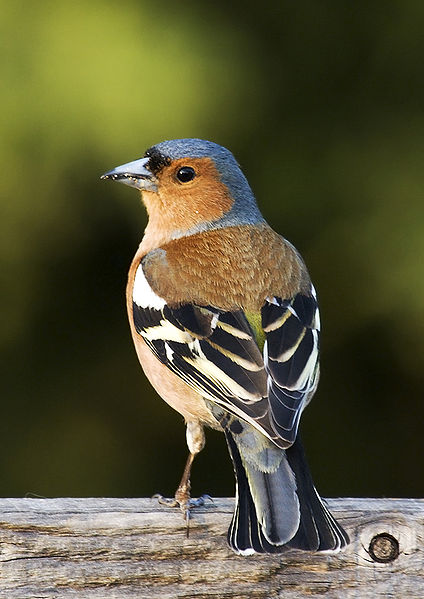
In his position at NASA, where he helps coordinate the agency’s array of education programs, Jim Stofan lives and breathes aeronautics. But he came to rocket science the long way around, via marine science and environmental education.
Jim's been at NASA since 2003, but has worked in science education all of his life. At the National Wildlife Federation, he oversaw everything from Ranger Rick magazine to community education efforts like the Backyard Wildlife Habitat. In his seven years at Sea World of Florida, he helped develop marine science education programs, including Shamu TV. He was Director of Distance Education at Johns Hopkins School of Hygiene and Public Health, and he is a volunteer scuba diver at the National Aquarium in Baltimore.
What started Jim on the path of science education that eventually landed him at the DC headquarters of the country’s premier space agency?
From a young age, Jim was fascinated with rockets. But it was a seed-eating songbird that first sparked his interest in science. Growing up in San Francisco, Jim was not only the son of two teachers but also the nephew of the California Academy’s curator of ornithology. Long before its recent green makeover—which added an undulating ‘living roof,” walls insulated with recycled blue jeans, and a 4-story rainforest dome—the Academy was a center for research into the natural world. Jim’s uncle’s specialty was birds, and he was especially interested in finches.

“He was the kind of uncle you’d see at Christmas,” says Jim. “The one all the kids gravitated to and the parents thought was too weird. He spoke 16 dialects of finch. He was able to tell you, ‘This bird comes from Chinatown’, or ‘That one lives out at Ocean Beach, and that one’s cheating on his wife over in the other tree.’ He really made science come alive.”
With his uncle and his educator parents as role models, Jim spent most of his childhood learning about science in a hands-on, dynamic way—outside the classroom. “And I ended up going in to a similar field as my uncle,” Jim continues. “When I first got to Sea World, I was a guide in their native species program, teaching folks about endangered Florida species, like manatees. I would do field ecology with students—take them out into the field, scuba diving; I would lead marine field studies down at the Keys. These are things you can’t do in a classroom. You can’t go out and do a night trawl, picking up microscopic creatures, and bringing them back into the lab to learn about them. But out in the field, all that becomes possible.”
Getting kids and educators out into the field, participating in hands-on experiences, has always been Jim’s passion. “When I worked at the National Wildlife Federation,” he recalls, “I tried to convey to kids and families that even if they don’t live out in the woods, there are ways to get back to nature, and learn about the world around them. It all starts with a personal connection to the natural world.”
Informal educators, he thinks, have opportunities that classroom teachers can only dream of. “Out-of-classroom teachers have greater flexibility,” says Jim. “They don’t have to teach to the test, and they have more leeway in letting the kids explore.” In addition to his interest in animals and marine sciences, he’s still, of course, a fan of rockets. (Read more about NASA’s hands-on rocket activities in howstosmile.org.)
